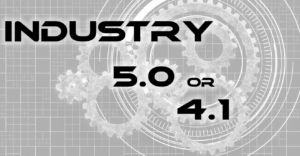Almost every day a new article about 3-D printing (or additive manufacturing) is published. Some pundits believe that 3-D printing represents the future of manufacturing and the best hope for reestablishing manufacturing as a stronger segment of the U.S. economy. The editorial staff at the New York Times tried to find out how much of news about 3-D is hype and how much of it is based in fact. The staff wrote, “For all the hype over three-dimensional printing, it’s still unclear exactly how and when it will have an impact on our daily lives.” [“Will 3-D Printing Change the World?” The New York Times, 12 August 2014] To get at the truth, the staff approached six experts in the area of additive manufacturing and asked them for their opinions. In this article, I’ll look at what three of those experts had to say. In Part 2 of this article, I’ll discuss some of the more futuristic uses of additive manufacturing discussed by the remaining three experts.
The first expert interviewed was Daniel S. Hamermesh, a professor of economics at the University of Texas at Austin. Hamermesh doesn’t believe that 3-D printing will penetrate the home market anytime soon, but he does think that “large-scale 3-D printing [could] revolutionize manufacturing” and that it “may be soon upon us; and this prospect may well have important economic effects.” He explains:
“How will the rise of 3-D printing in manufacturing affect the American economy and how will we fare as consumers and workers? Productivity in manufacturing has grown more rapidly than in other sectors of the economy for many years, 117 percent since 1990 compared to 64 percent for business as a whole. Three-dimensional printing will spur further productivity growth, especially in those industries that turn out many replications of the same part for assembly into complete products (automobiles, airplanes, electrical equipment, etc.). As has been true in the past, the increased productivity will lower the cost of production, which will be passed on to buyers in the form of lower prices. In the end, we as consumers will benefit from 3-D printing, not because we’ll have little printers at home, but because companies will have large printers that help lower the price of the goods we buy. We’ll be able to buy more for less.”
I’m not exactly sure what Hamermesh meant by “large-scale 3-D printing.” It could refer to large numbers of printers being used or to the size of the printers themselves (or both). Printers are getting very large. For example, “in May 2014, a private company in China, WinSun, printed 10 full-size houses using 3-D printers in the space of a day. The process utilized quick-drying cement and construction water to build the walls layer-by-layer.” [“3-D Printing Builds Up Architecture,” by Lindsay Hock, R&D Magazine, 13 August 2014] Hock reports that the Chinese aren’t the only individuals using giant printers. In March of this year, she notes, “Dutch architects [began] fabricating pieces of a canal house out of plastic with a giant 3-D printer and slotting them together like oversized Lego blocks.” Hamermesh notes that the increased use of additive manufacturing will likely reduce the number of workers needed on the factory floor. Nevertheless he remains optimistic. “Don’t worry,” he writes, “the increased purchasing power generated by the greater abundance of inexpensive goods will lead to expansions in employment in other industries, just like technology has improved our lives.”
Another expert tapped by the New York Times‘ staff was Luke Heemsbergen (@parrotluke), a PhD candidate at the University of Melbourne in Australia. In contrast to Hamermesh, Heemsbergen is not a proponent of 3-D printing. “Utopian visions of new technologies never work out as imagined,” he writes, “and often create unimagined consequences. Why do we think 3-D printing will be different?” It should be noted that Hamermesh focuses on the benefits of commercial uses of additive manufacturing while Heemsbergen focuses on home uses. Heemsbergen sees personal 3D printers as another source of “conspicuous consumption” that will result in a “flood of discarded objects” that will continue to clutter landfills. Although I agree with Hamermesh that 3-D printing will probably not penetrate deeply into the home market in the near future, it may not have to in order to create the conspicuous consumption predicted by Heemsbergen. That’s because companies like Staples and Amazon are making 3-D printing accessible to individuals. Riley Snyder (@RileySnyder) reports, for example, “From personalized miniature bobbleheads to flower vases, Amazon’s new 3-D printing marketplace plans to simplify the 3-D printing process for consumers.” [“Amazon jumps into 3-D printing market with bobbleheads, more,” Los Angeles Times, 28 July 2014] That’s exactly what Heemsbergen fears.
A third expert tapped by the New York Times was Nick Allen, founder of a London-based 3-D printing company. He agrees with Hamermesh that the home market is never likely to grow very large; but, he disagrees with him about how impactful 3-D printing will be in the commercial arena. “Three-dimensional printing is a great way of making a unique product cheaply, as it does not require expensive tooling like injection molding machines do,” he writes, “but items printed from a 3-D printer are unlikely to ever match the quality and strength and surface finish of mass manufactured goods. The layer-by-layer process of 3-D printing is a slower, more expensive, worse way of manufacturing than molding or subtractive manufacture.” Although Allen is probably correct about the expense and quality of most of today’s 3-D products, Samir Shah, CEO and co-founder of 4 AXYZ Inc., believes that additive manufacturing is going to play a significant role in the commercial manufacturing sector. “Effectively, we need to separate delightful, hobby-level, in-home making from economy-empowering manufacturing,” he writes. [“3D Manufacturing: New Weapon For US Economy,” InformationWeek, 1 August 2014] He asserts, “Three things are desperately needed from today’s 3D technology.” They are:
- Rapid progress toward superior quality finishing.
- Width and depth of product range (a greater variety of materials prepared for automated processes).
- Industrial-scale customization to achieve required volumes and speed of production.
Shah concludes, “3-D making is all set to blossom into manufacturing. 3-D manufacturing will bring the world to our doorstep.” Matthew Timms agrees that additive manufacturing will have an impact in the manufacturing sector but will never completely replace more traditional manufacturing methods. [“3D printing cannot completely replace traditional manufacturing, say experts,” World Finance, 16 July 2014] He sees some the greatest impacts of additive manufacturing affecting how supply chains function. “Additive manufacturing has only recently come into mainstream use,” he writes, “and companies are beginning to question how the technology could factor into their processes and improve backward integration. Provided the technology addresses a number of areas still in need of improvement, where once the onset of globalization gave rise to globe-spanning supply chains, additive manufacturing could spark a return to highly localized manufacturing environments.” He goes on to note:
“Additive manufacturing, according to a Goldman Sachs report entitled The Search for Creative Destruction, is one of eight major technologies that will drive companies and business models in the future to either adapt or die. However, 3D printing is still very much in its infancy, and fails to match the requirements of big businesses aiming to improve upon existing products and processes. Should some of the technology’s creases be ironed out, however, the process could well emerge as a viable alternative for organizations seeking to streamline and localize their supply chains.”
As the pundits note, there are still some challenges to be worked out with additive manufacturing techniques before they create the revolution that many of them see emerging. The staff at R&D Magazine conducted a survey of users of these techniques and asked: “What improvements are needed to current 3-D printing technologies?” [“3-D Printing: A New Manufacturing Staple,” R&D Magazine, 15 April 2014] The survey found:
“Many respondents cited cost improvements (60%), saying a decrease in cost would spark more interest in purchasing, as cost is everything when purchasing equipment for laboratories/organizations and payback is expected. 46% of the respondents cited material compatibility as a needed improvement, saying that more complex manufacturing efforts drive a need for more material integration into the technique, especially in applications regarding aerospace and medical devices. Respondents also cited accuracy (32%) and ease-of-use (30%) as other improvements needed.”
I’m optimistic that many of the challenges currently facing additive manufacturing will be solved. When those kinks are worked out, the possibilities for using 3-D printing to create new and innovative products will be limitless. In Part 2 of this article, I’ll focus on what some of those possibilities entail.




